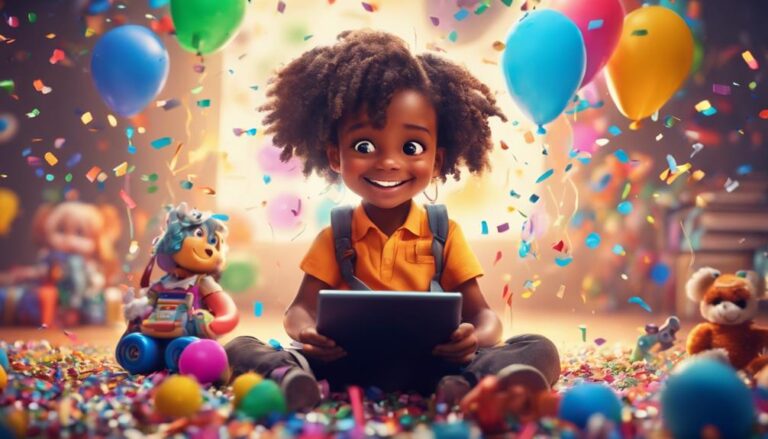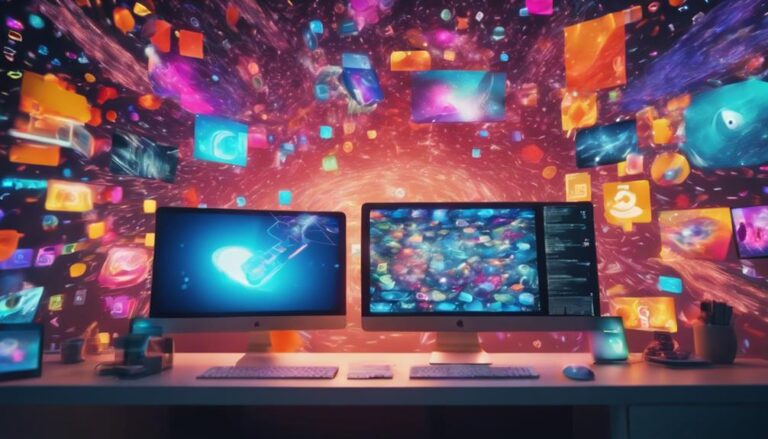3 Best Practices for 3D Character Animation
When it comes to bringing 3D characters to life, you know that it takes more than just technical skills to create a truly riveting performance. You're well aware that your character's success hinges on a trifecta of vital elements: a strong foundation, natural movement, and genuine emotional expression. But what does it really take to nail each of these components? By exploring the best practices for developing a rich character backstory, mastering realistic movement techniques, and conveying subtle emotions, you'll be on your way to crafting a character that audiences can't help but connect with.
Key Takeaways
- Develop a strong character foundation by crafting a rich backstory, defining core personality traits, and refining physical characteristics.
- Master the art of movement by using motion capture, kinetic flow, weight and balance, timing and pacing, and secondary motion.
- Bring emotion to the surface with subtle eye expressions, emotional triggers, and nuanced performances that align with character personality and backstory.
- Ensure consistency in character behavior and emotional responses to create a believable and relatable character.
Develop a Strong Character Foundation
Establish a strong character foundation by crafting a rich backstory, defining core personality traits, and refining physical characteristics that inform their movements and interactions.
This foundation is vital in 3D character animation, as it enables you to create a believable and relatable character.
When developing your character's backstory, think about their motivations, desires, and fears. What drives them? What do they want to achieve? What're they afraid of?
This will help you understand their personality traits, such as their values, strengths, and weaknesses.
In character design, consider their physical appearance, including their body type, facial features, and attire.
This will influence how they move and interact with their environment. For instance, a tall and slender character may move with grace, while a shorter and stockier character may move with more force.
By investing time in backstory development and character design, you'll create a well-rounded character that audiences can connect with.
This strong foundation will make your 3D character animation more engaging, realistic, and memorable.
Master the Art of Movement
Master the Art of Movement
With a strong character foundation in place, you can now bring your character to life by mastering the art of movement, where subtle gestures, postures, and movements convey their personality, emotions, and intentions. This is where the magic happens, and your character starts to feel truly alive.
To achieve believable movement, consider the following key aspects:
| Aspect | Description |
|---|---|
| Motion Capture | Record real-life movements to create authentic animations |
| Kinetic Flow | Guarantee seamless shifts between movements for natural flow |
| Weight and Balance | Characters should appear grounded and balanced in their movements |
| Timing and Pacing | Control the speed and rhythm of movements to convey emotion |
| Secondary Motion | Add subtle details, like hair or clothing movement, to enhance realism |
Bring Emotion to the Surface
As you plunge into the domain of emotional expression, you'll discover that bringing emotion to the surface requires a deep understanding of your character's inner world, where subtle facial cues, body language, and vocal inflections convey the intensity and complexity of their feelings.
To create a believable and engaging emotional performance, focus on the following key aspects:
Eye expressions: The eyes are the windows to the soul, and subtle changes in eye shape, size, and movement can convey a wide range of emotions.
Emotional triggers: Identify what sparks your character's emotions, whether it's a memory, a person, or an event, and use these triggers to fuel their emotional responses.
Subtlety is key: Avoid over-the-top performances and instead opt for subtle, nuanced expressions that feel authentic and relatable.
Consistency is vital: Confirm that your character's emotional responses are consistent with their personality, backstory, and motivations to create a cohesive and believable performance.
Frequently Asked Questions
How Do I Optimize My Animation Workflow for Better Efficiency?
To optimize your animation workflow, you're streamlining your process by identifying bottlenecks and automating repetitive tasks. You'll refine your animation pipelines by implementing task automation, freeing up time for creative decision-making and boosting overall efficiency.
What Software Is Best for 3D Character Animation Beginners?
You're looking for the perfect animation software to kickstart your 3D character animation journey! Try Blender, Maya, or 3ds Max – all offering free trials, allowing you to experiment and find the best fit for your creative style.
Can I Use Motion Capture Technology for Realistic Animations?
You can use motion capture technology for realistic animations, but be aware of its limitations, such as data noise and lack of emotional depth, relying on an actor's performance to bring authenticity to your 3D character.
How Do I Protect My 3D Character's Intellectual Property Rights?
You'll want to safeguard your 3D character's IP by registering copyrights for original content and filing patent applications for unique design elements, ensuring legal protection under copyright laws and preventing unauthorized use or replication.
What Are the Industry Standards for 3D Character Animation Resolution?
You're aiming for high-quality visuals, so certify your 3D character animation meets industry standards: target a minimum pixel density of 4K (3840 x 2160) and frame rates of 24-60 FPS to guarantee smooth, crisp motion.
Conclusion
As you finalize your 3D character animation, remember that a strong foundation, mastered movement, and emotional depth are key to success.
You've crafted a rich backstory, defined core traits, and refined physical characteristics.
You've honed motion capture, kinetic flow, and weight and balance techniques.
Now, focus on eye expressions, emotional triggers, and nuanced performances to bring your character to life.
By following these best practices, you'll create a believable, relatable, and engaging 3D character that captivates your audience.







